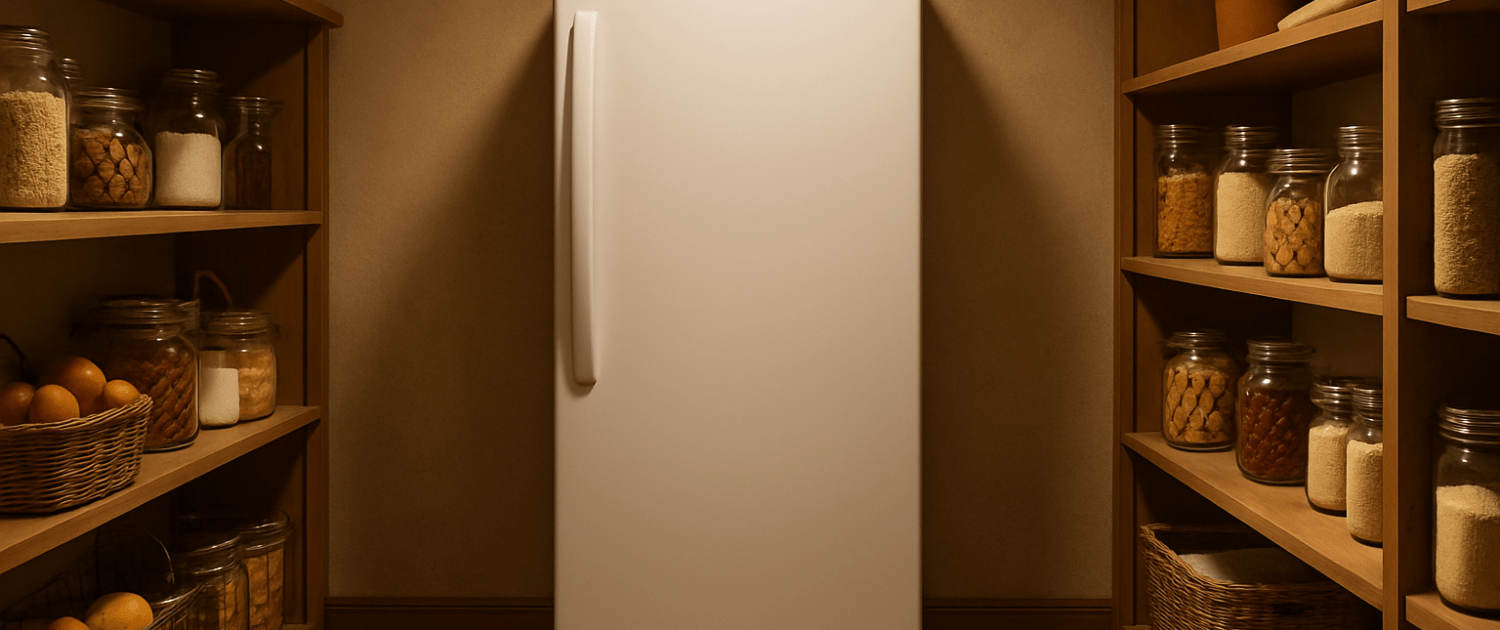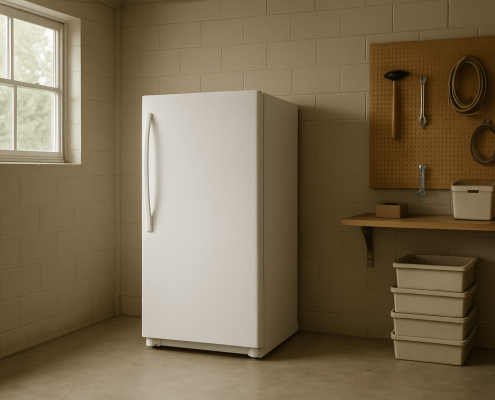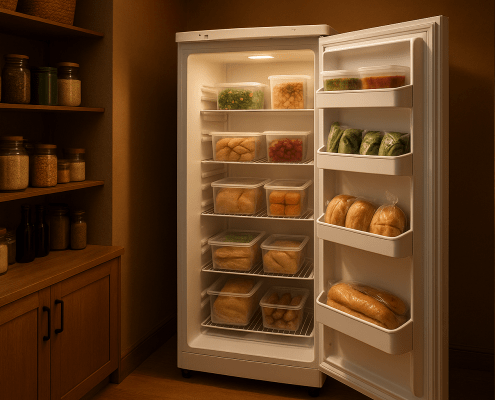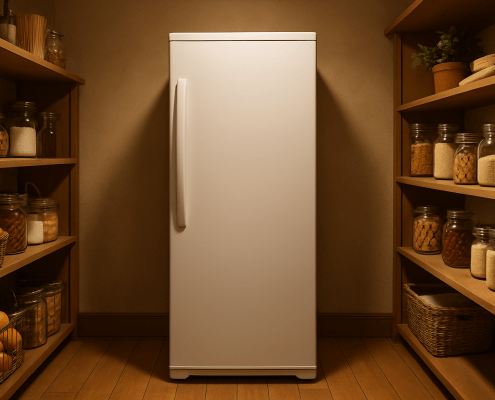Troubleshooting a Clicking Noise in Your Upright Freezer
Steven E / Tuesday May 20, 2025
Opening your upright freezer door and being greeted by warmth, spoiling food, and strange noises is any homeowner’s nightmare. A freezer that is not cooling properly or making odd clicking sounds needs immediate attention to avoid food waste and prevent permanent damage.
We’ll explore the common causes of freezer failure accompanied by clicking noises and how to get your appliance back to freezing food properly. With some handy DIY diagnostic tests and repairs, you can often solve the problem yourself without waiting for an expensive technician visit.
The information in this article may not apply to your specific appliance model. We recommend consulting your manufacturer’s documentation or contact us with any questions.
What Does a Clicking Freezer Mean?
Clicking, cracking, or buzzing noises from your freezer are telltale signs of a malfunctioning cooling system. The main components that keep the interior cold are the compressor, evaporator fan, start relay, and run capacitor.
Issues with the compressor, relay, or capacitor can all manifest as clicking or chattering noises as the system tries unsuccessfully to start up and begin circulation. The clicks are the result of electrical arcing as the starting components fail to operate smoothly.
Meanwhile, a clicking or rattling evaporator fan means debris may be interfering with blade rotation or else the motor is wearing out. Below we’ll explore troubleshooting for each of these common culprits behind the clicks.
Start Relay Testing and Replacement
The start relay is one of the most prone to failure parts in a freezer. It works together with the run capacitor to jolt the compressor on during each cooling cycle. Over time, electrical arcing damages the contacts until the relay prevents the compressor from starting properly.
Checking the Start Relay
Loud clicking coming from the lower rear of the freezer points to a struggling start relay. To evaluate:
- Unplug the appliance for safety.
- Remove the access panel to expose the main electrical compartment.
- Locate the large start relay. It has multiple spade terminals.
- Use a multimeter on the R x 1k Ohms setting to check continuity through the relay.
You should detect continuity between the start and run motor terminals when set to “closed.” If no continuity, the relay must be replaced. Also, inspect for signs of overheating.
Installing a New Start Relay
After confirming the original is defective through continuity testing, install an exact replacement start relay.
- Match the terminal configuration and capacity ratings.
- Transfer any accessory wires to the new component.
- Make sure you have a snug fit in the socket and proper terminal contact.
- Reinstall the access panel and plug in the freezer.
The specific relay you need is based on your freezer’s make and model. Refer to the full model number when searching for replacement parts to find the correct one.
Testing and Replacing the Run Capacitor
Along with the start relay, the run capacitor helps provide the jolt of power needed to turn on the compressor. A weakened run capacitor can cause clicks and failure to start as it tries charging up.
Evaluating Run Capacitor Performance
To evaluate a suspect run capacitor:
- Unplug and access the capacitor on the control board.
- Use an analog ohmmeter to check if it holds and discharges a charge.
- Use a capacitor tester to measure microfarads – should match the rating on the capacitor.
If it fails either test, replacement is required. Warning: capacitors store dangerous levels of charge-discharge before handling.
Installing a New Run Capacitor
When fitting a new run capacitor, take care to:
- Match the microfarad rating stamped on the old capacitor.
- Make sure it has the same style of mounting and terminal configuration.
- Discharge any residual energy before swapping.
- Verify the terminals make solid contact in the socket.
Always reference your freezer’s full model number when looking up a replacement to get an exact match. Pay close attention to the capacitance and voltage specifications.
Diagnosing and Replacing a Faulty Compressor
The compressor is the heart of the freezing system, operating like a pump to circulate refrigerant through the coils. Compressor failure can cause low cooling and clicking as it tries to start up.
Testing the Compressor
If the start relay and run capacitor check out fine but clicking persists, the compressor itself may be faulty. To evaluate:
- Unplug and remove access panels to get to the compressor.
- Use a multimeter on the Ohms setting and check continuity through compressor windings.
Lack of continuity means the windings have burned out and the compressor needs replacing.
Troubleshooting a Clicking Evaporator Fan
A rattling or clicking evaporator fan motor can also produce odd freezer noises, separate from compressor issues.
Fan Blade Obstructions
If something is obstructing the fan blades:
- Unplug the freezer and remove panels to access the fan cage.
- Carefully clear out any debris that has collected on the blades.
- Spin the fan manually to confirm smooth, quiet rotation.
Failing Fan Motor
If blades spin freely but clicking resumes when plugged in, the internal fan motor bearings are likely worn out. Replacement is required in this situation.
- Locate the fan model number and order an exact replacement.
- When installing, align mounting brackets properly and reconnect the wiring.
- Make sure it spins free before reassembling the freezer.
Additional information
Thanks for reading! If you have any other appliance repair needs or projects, you can find other resources and our DIY blog at AppliancePartsPros.com. There, you can enter your model number to order the exact parts you need. Most orders arrive in 2-3 business days.
We’re here to help! You can reach our award-winning customer service team at 1-877-477-7278, chat with a pro on our website, and watch thousands of free video tutorials on our YouTube channel.
With nearly a decade of experience in providing top-notch customer service regarding appliance parts and repair, Steven enjoys sharing practical advice, troubleshooting tips, and interesting information to help readers stay informed.





